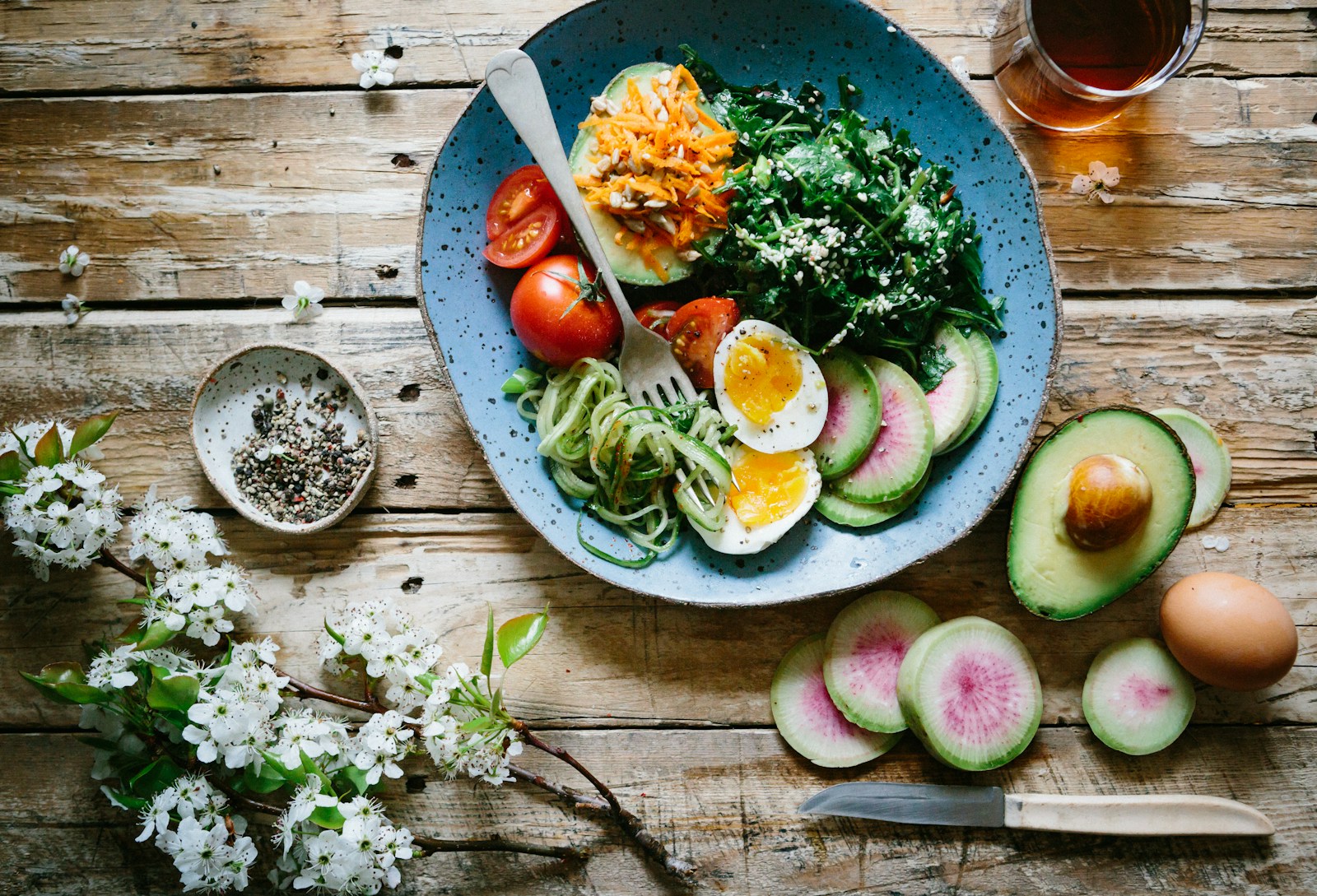What is Keto? A Beginner’s Guide to Ketosis
Are you curious about the ketogenic diet and where to start? You’ve found the right spot. The keto diet, or “keto,” has become popular for its benefits like weight loss and better health. This guide will explain the keto lifestyle, helping you decide if it’s right for you.
Key Takeaways
- The ketogenic diet is a low-carb, high-fat eating plan that puts your body into a metabolic state called ketosis.
- Ketosis allows your body to burn fat for fuel instead of relying on glucose, leading to potential weight loss and other health benefits.
- Keto-friendly foods include healthy fats, low-carb vegetables, and moderate amounts of protein-rich foods.
- Implementing a keto diet requires careful planning and adjustments to ensure you’re meeting your nutritional needs.
- Potential side effects of the keto diet, such as the “keto flu,” can be managed with proper hydration and electrolyte supplementation.
Understanding the Ketogenic Diet
The ketogenic diet, or keto diet, is a diet rich in fats, moderate in proteins, and very low in carbs. It puts your body into a state called ketosis. In this state, your body burns fat for energy, not carbs.
What is the Keto Diet?
The keto diet is a diet that’s low in carbs and high in fats. It’s similar to the Atkins and low-carb diets. But the keto diet focuses on getting your body into ketosis. This means your body uses fat as its main energy source, not carbs.
How Does Ketosis Work?
When you cut down on carbs, your body needs a new energy source. That’s when ketosis kicks in. Your liver breaks down fat into ketones, which your body uses for energy. This change is key to the ketogenic diet and its benefits.
| Macronutrient | Keto Diet | Traditional Diet |
| Carbohydrates | 5-10% of total calories | 45-65% of total calories |
| Protein | 20-25% of total calories | 10-35% of total calories |
| Fat | 70-80% of total calories | 20-35% of total calories |
“The ketogenic diet is a powerful tool for weight loss and overall health, but it’s important to understand how it works and how to implement it safely and effectively.”
Benefits of a Ketogenic Lifestyle
Starting a ketogenic lifestyle can bring many health benefits. You might see a lot of weight loss and better fat burning. This diet puts your body in ketosis, making it great at using fat consumption.
Weight Loss and Fat Burning
The keto diet is great for losing weight. It limits carbs and makes your body burn fat for energy. This means you can lose more weight and burn fat faster.
- More fat consumption means more weight loss and fat reduction.
- The keto diet boosts your metabolism, helping you burn more calories all day.
- Ketosis can also reduce hunger and cravings, making it easier to stick to a diet.
| Metric | Keto Diet | Standard Diet |
| Average Weight Loss | 10-20 lbs in the first month | 4-8 lbs in the first month |
| Fat Burning Rate | 0.5-1 lbs of fat per week | 0.2-0.5 lbs of fat per week |
| Appetite Suppression | High | Moderate |
Choosing a ketogenic lifestyle can unlock fat burning and lead to lasting weight loss.
What is keto?
The ketogenic diet, or “keto,” is a diet that’s become very popular. It focuses on eating a lot of fat and very few carbs. This helps the body enter a state called ketosis, where it burns fat instead of carbs.
The main ideas of the keto diet are:
- Eat less than 50 grams of carbs a day.
- Choose healthy fats like avocados, nuts, seeds, and olive oil.
- Keep your protein intake in check to stay in ketosis.
When you’re in ketosis, your body uses fat for energy instead of carbs. This can help you lose weight, control blood sugar, and feel more focused.
| Macronutrient | Keto Diet | Standard Diet |
| Carbohydrates | 5-10% of total calories | 45-65% of total calories |
| Fats | 60-75% of total calories | 20-35% of total calories |
| Protein | 15-30% of total calories | 10-35% of total calories |
If you want to lose weight, boost your health, or try something new, learning about the keto diet is a good start.
“The ketogenic diet is a powerful tool for improving health and performance, but it’s not a one-size-fits-all approach. It’s important to work with a healthcare professional to determine if it’s the right fit for your individual needs and goals.”
Macronutrient Ratios and Keto-Friendly Foods
To stay in ketosis, watching your macronutrients is key. A keto meal plan should have about 70-80% healthy fats, 15-20% protein, and 5-10% carbs. This mix helps your body use fat for energy instead of glucose.
Carbs on Keto: How Low Should You Go?
On a low-carb diet like keto, aim for less than 50 grams of carbs daily. Some say go as low as 20-30 grams. This limits helps your body burn fat for energy.
Healthy Fats and Protein Sources
The keto diet stresses eating lots of healthy fats and protein. Good fats include avocados, nuts, seeds, olive oil, and fatty fish like salmon. For protein, choose lean meats, poultry, eggs, and low-carb dairy.
By following these macronutrient guidelines and using keto recipes and foods, you’ll reach ketosis. This leads to a healthier ketogenic lifestyle.
Getting Started with a Keto Diet
Starting a keto diet might seem hard, but it’s easier with the right plan. First, make a keto meal plan that fits your life and likes. Add keto recipes that taste great and help your body get into ketosis.
Knowing your macronutrient ratios is key. Aim for 70-80% healthy fats, 15-20% protein, and 5-10% carbs. This mix helps your body use fat as its main fuel.
- Plan your weekly keto meal plan ahead, making sure you have all the ingredients.
- Try different keto recipes to find ones you like and that give you the nutrients you need.
- Learn about keto-friendly foods like avocados, nuts, seeds, and low-carb veggies. Use them in your meals.
- Drink lots of water to stay hydrated and reduce side effects during the start.
- Be patient and keep going. Getting used to a keto lifestyle takes time, but it’s worth it.
| Keto Meal Plan | Keto Recipes |
| Grilled salmon with roasted asparagusCauliflower rice stir-fry with chicken and veggiesZucchini noodles with creamy avocado pesto | Keto-friendly breakfast: Egg muffins with spinach and fetaKeto-friendly lunch: Cobb salad with grilled chicken and avocadoKeto-friendly dinner: Baked salmon with roasted Brussels sprouts and garlic butter |
Everyone’s keto journey is different. Be patient, try new keto recipes, and listen to your body. Find what works best for you.
“The keto diet has been a game-changer for me. I feel more energized, focused, and healthier than I have in years.”
Keto Meal Planning and Recipes
Planning your meals is key to doing well on the keto diet. Here, you’ll find lots of breakfast, lunch, dinner, and snack ideas that fit the keto diet. You’ll also get easy recipes to keep you on track with your keto meal plan and keto lifestyle.
Breakfast, Lunch, and Dinner Ideas
Begin your day with a tasty keto breakfast like omelets with avocado and cheese. Or, try a creamy keto smoothie with low-carb berries and MCT oil. For lunch, enjoy a keto-friendly salad with grilled chicken, olives, and a creamy dressing.
For dinner, treat yourself to a juicy keto-approved steak. Pair it with roasted Brussels sprouts and cauliflower rice on the side.
Keto-Friendly Snacks and Desserts
- Craving something sweet? Try a keto-friendly dessert like creamy avocado chocolate mousse or refreshing keto ice cream.
- For a crunchy snack, go for keto snacks like almond flour crackers, celery sticks with cream cheese, or nuts and seeds.
- Enjoy a tasty keto fat bomb made with coconut oil, nut butter, and a low-carb sweetener.
| Keto Breakfast | Keto Lunch | Keto Dinner | Keto Snacks | Keto Desserts |
| Omelets with avocado and cheese | Keto-friendly salad with grilled chicken | Keto-approved steak with roasted Brussels sprouts | Almond flour crackers, celery sticks with cream cheese | Avocado chocolate mousse, keto ice cream |
“Simplicity is the ultimate sophistication when it comes to keto recipes.”
Potential Side Effects and How to Manage Them
The keto diet offers many benefits, but it can also have side effects. One common issue is the “keto flu.” It can cause headaches, fatigue, and nausea as your body starts using fat for energy. But, there are ways to handle these symptoms and make the transition smoother.
- Stay hydrated: Drink lots of water and electrolyte-rich drinks to replace lost fluids and minerals.
- Increase salt intake: Adding a bit of salt to your food or drinking bone broth can help with muscle cramps and dizziness.
- Supplement with magnesium and potassium: These minerals are key for health and can reduce keto flu symptoms.
- Get enough rest: Let your body rest and recover during this time, as tiredness is common.
- Gradually increase physical activity: Start with gentle exercise and gradually increase it as your body gets used to the keto diet.
By tackling these side effects early, you can make the switch to a keto diet easier. Remember, the keto flu is just a temporary challenge. With the right approach, you can overcome it and enjoy the benefits of this lifestyle change.
“The keto flu is a temporary, harmless state that most people experience when they first start a keto diet. With the right support and management, it can be easily overcome.”
Tips for Staying on Track with Keto
Starting a keto diet can change your life, but it’s hard to keep going. We’ve got some tips to help you stay on track with your keto diet.
- Meal Prep and Planning: Spend time planning and preparing keto meals ahead. This way, you always have healthy food ready, making it easier to avoid bad choices.
- Track Your Progress: Keep an eye on your weight, measurements, and how you feel. Use a fitness tracker or app to track your progress.
- Embrace Variety: Try new keto recipes and ingredients to keep your meals interesting. This variety keeps you excited and ensures you get all the nutrients you need.
- Manage Stress: Stress can mess up your diet plans. Find healthy ways to relax, like meditation or yoga, to help manage it.
- Stay Hydrated: Drinking water is key on the keto diet. It helps with cravings, digestion, and keeps your electrolytes balanced.
Remember, staying consistent and being kind to yourself are crucial on the keto diet. Use these tips to keep your keto diet going strong and reach your health goals.
| Keto-Friendly Food | Benefits |
| Avocado | High in healthy fats, fiber, and various vitamins and minerals |
| Salmon | Rich in omega-3 fatty acids, which can reduce inflammation |
| Spinach | Low in carbs and packed with nutrients like vitamin K, iron, and folate |
| Almonds | Provide healthy fats, fiber, and protein to keep you feeling full |
“The key to success on the keto diet is finding a sustainable routine that works for you. With a little planning and creativity, you can make it a lifestyle, not just a short-term fix.”
By using these tips, you’ll be ready to stay motivated and keep seeing great results on your keto diet journey.
Conclusion
Congratulations on reaching the end of our guide on the ketogenic diet! We’ve covered the basics of what is keto and its benefits. The keto diet can help with weight loss, improve energy, and boost brain function.
Starting your keto journey? Remember, being consistent and patient is crucial. Stick to the right macronutrient ratios and eat keto-friendly foods. With good meal planning and tasty recipes, you’ll see the keto diet’s benefits.
The keto lifestyle is tailored to each person. Be ready to handle side effects and adjust as needed. Stay motivated and seek help from the keto community. With hard work and dedication, the keto diet can lead you to better health.
FAQ
What is the ketogenic diet?
The ketogenic diet, or “keto” for short, is a diet high in fat and low in carbs. It helps your body burn fat for energy instead of carbs.
How does ketosis work?
By cutting down on carbs, your body enters ketosis. It then burns fat for energy, not carbs. This creates ketones, a new energy source for your body and brain.
What are the benefits of a ketogenic lifestyle?
The keto diet can help you lose weight and improve your body’s fat burning. It puts your body in ketosis, helping you manage weight and improve health.
What should I eat on a keto diet?
To stay in ketosis, focus on healthy fats and limit carbs. Eat foods like avocados, nuts, seeds, and fatty fish. Also, include low-carb veggies in your diet.
How do I get started with a keto diet?
Starting keto can be easy with the right plan. Create a meal plan, buy keto-friendly foods, and slowly cut carbs. Keep track of your macros and drink plenty of water.
What are some keto-friendly meal and snack ideas?
Enjoy a variety of tasty keto meals and snacks. Try eggs and bacon for breakfast or a keto smoothie. For lunch and dinner, choose grilled salmon or zucchini noodles with pesto. Snacks can be nuts, seeds, or low-carb dips with veggies.
What are the potential side effects of the keto diet?
The keto diet may cause side effects like the “keto flu.” Symptoms include headaches and fatigue. Drinking water and replenishing electrolytes can help.
How can I stay on track with the keto diet?
Staying on keto can be tough. Meal prep, try new recipes, and find motivation. Celebrate small wins and stay patient. With the right mindset, you can make keto a part of your life.





